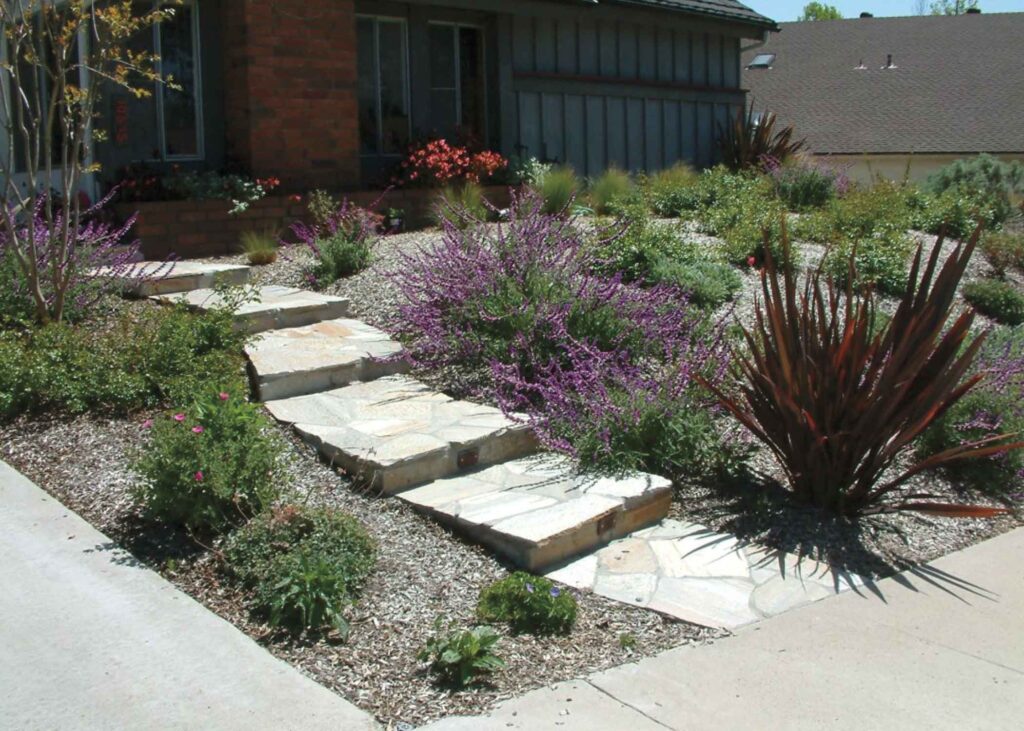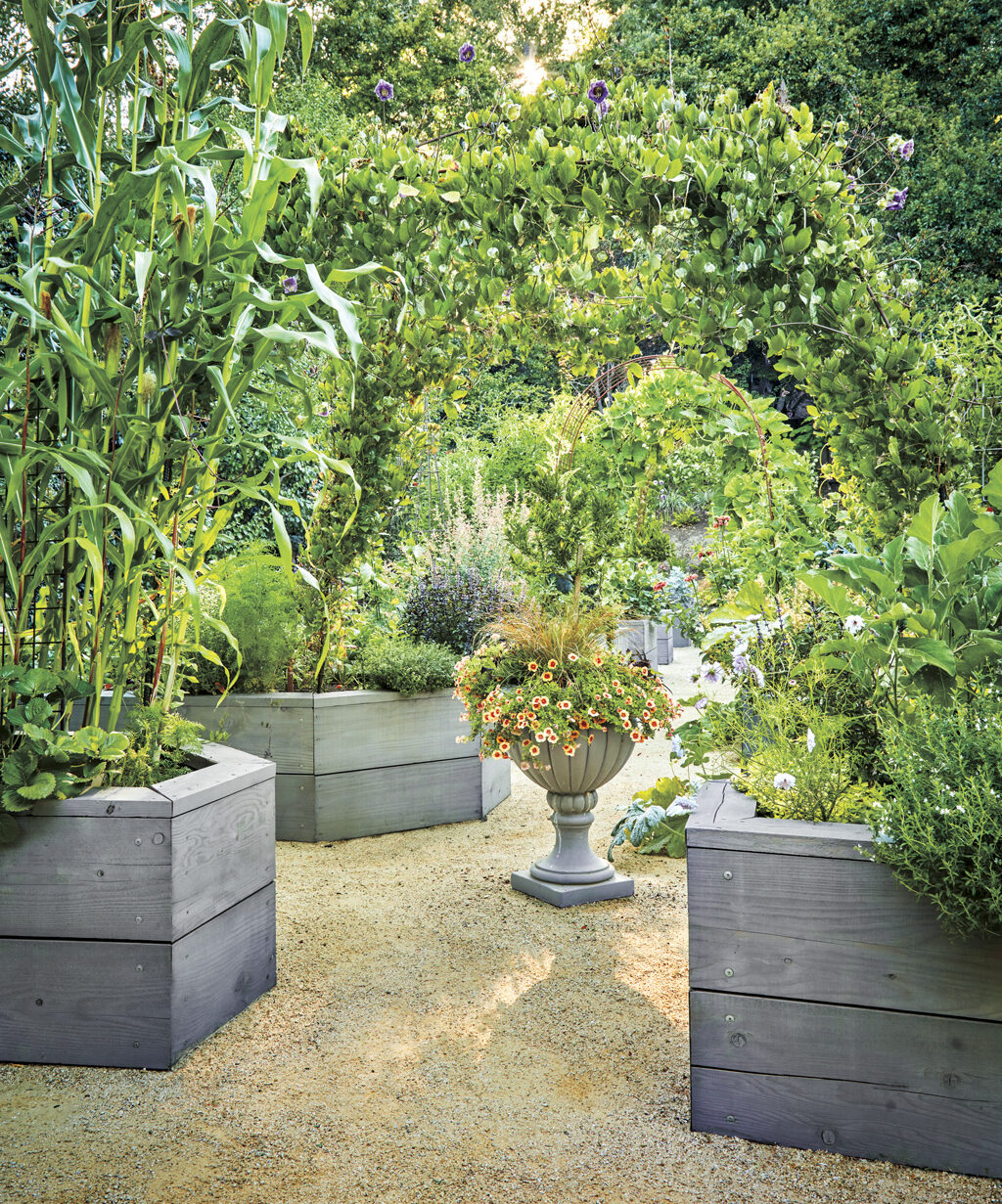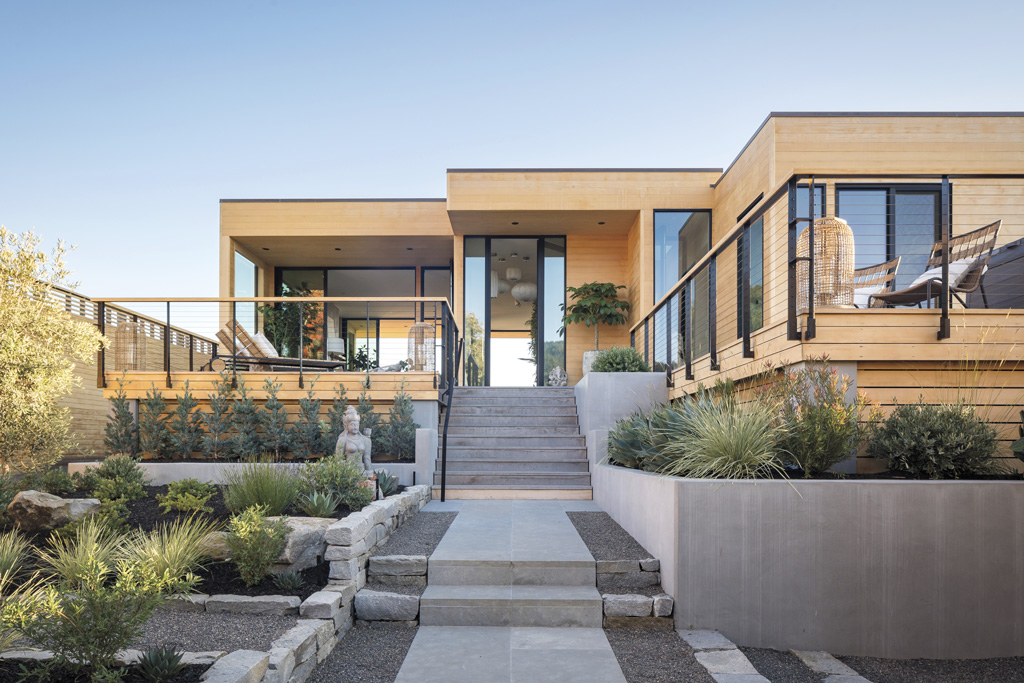Design & Home
How to Stay Safe Not Sorry This Fire Season
 A hens and chicks evergreen succulent plant
A hens and chicks evergreen succulent plant“If you live in the Tahoe Area, you need to adapt to snow. If you live in Marin County, you need to learn to adapt to wildfire,” says Rich Shortall, FIRESafe Marin’s executive coordinator. Marin is facing a long, hard drought season, paired with the wildfire risk; preparedness is the name of the game. Back in May, the Marin County Board of Supervisors voted unanimously to declare a drought emergency for the county. The board’s supervisor, Dennis Rodoni, voiced his concerns over what experts are calling the worst drought conditions in more than 140 years.
“Much of Marin is at risk for wildfire due to the accumulation of fuels over many years. As we all know, we are in the midst of a severe drought. Vegetation is very dry, making it more susceptible to wildfire,” says Shortall. But there are measures everyone can take, and we spoke to some local experts about how to make your garden and home more fire-safe.
“The water restrictions being introduced by local water districts are somewhat at odds with the need for fire prevention. If you have plants that cannot withstand the reduced watering that will be required, find other ways to water them — such as using buckets of shower water — but do not let them die off,” says Warren Simmonds of Novato-based landscape architecture firm Simmonds & Associates. If they do die, Simmonds recommends removing them immediately and waiting until fall planting season to re-plant them. “And consider replacing them with succulents such as aloes, agaves, or smaller ground-cover succulents like sedums or senecio,” he says.
FIRESafe Marin advises using “plants that are low-growing, open-structured and less resinous” and reminds gardeners that plants that are green in color and lush offer more protection than others. The idea is that these plants hold more moisture and are less flammable. The organization also advocates choosing natives and pollinator-friendly plants where appropriate. But Simmonds is quick to add, “Some drought-resistant plants, such as the native manzanitas, California bay trees or rosemary, contain oils that are highly flammable.” (Visit www.firesafemarin.org/plants/fire-smart for a complete list of fire-safe plants.)
Michael O’Connell of Petaluma-based O’Connell Landscape says, “Not all native plants are well suited to a fire-safe scheme, but there are many great choices.” Some of his favorites are yarrow hybrids, California fuchsia, blue beach aster (seaside daisy), island alum root, western sword fern and western redbud.
Choosing the right type of plant is just the beginning, though. When planning a garden, aim for a design that reduces house and property vulnerability, often referred to as “firescaping.” This includes planting for fire safety, separating plants or creating plant “islands,” and using defensive space techniques.

Experts agree that leaving fire ladders unattended is a major hazard. “A fire ladder is when plants of different heights are combined under a tree canopy, with the tops of the shrubs reaching into or near to the crown of the tree, allowing the fire to climb into the crown,” says Simmonds. “Removing this ladder is one of the best ways to slow down the spread of fire. It is especially important within 100 feet of your home, where the burning shrubs and canopy can do major damage. Your local fire marshal will come out to your property at no charge and advise you of this and other best practices for minimizing fire hazard close to your home,” he adds.
Another highly recommended, and visually appealing, approach is to create fire islands around the home. “The idea is to manage the amount of plantings to reduce fuel next to a structure. Keys are to pick lower-growing vegetation and create breaks in planter beds by using walkways and other hardscape elements so that a fire can’t rapidly burn up to the building,” suggests O’Connell.
Other design elements that landscape architects incorporate into fire-wise outdoor areas are moisture-rich living roofs, raised metal beds for fruit and vegetable gardens, installing gravel and walkways around the perimeter of the house, using metal fencing, and eschewing wooden structures in favor of stone or earth-filled succulent walls. And if you have a pool, consider buying a high-pressure water pump so you can use the pool’s water supply to extinguish fires in an emergency. Simmonds also recommends removing combustible mulches, such as bark chips or shredded bark, and tree litter that is close to or up against the house. Replace flammable materials with an attractive gravel, stone or glass mulch, or even a Class A fire-rated artificial turf.
“Severe fire threat is here, and if you live next to one of Marin’s many open spaces, be proactive to reduce your risk of fire,” says O’Connell. “A fire-safe yard can be a really beautiful design with a little advance planning.”
FIRESafe Marin’s Guide to Fire-Smart Plants
- Choose plants with leaves, not needles. Leaves should be supple, moist and easily crushed.
- Opt for trees that are clean, not bushy, and have little deadwood.
- Select shrubs that are low growing (two feet or lower) with minimal buildup of dead material.
- Pick taller shrubs that are clean, not bushy or twiggy.
- Shrub sap should be water-like and not have a strong odor.
- Most fire-resistant trees are broad-leaf deciduous (lose their leaves), but some thick-leaf evergreens are also fire-resistant.
- Most fire-resistant trees have lower surface-area-to-volume ratios.
For ideas on more drought-friendly plants, Marin’s Master Gardener website offers an extensive list of plants that use little or no water once established. Visit www.marinmg.ucanr.edu to learn more.









